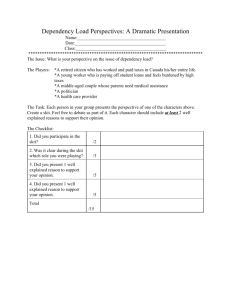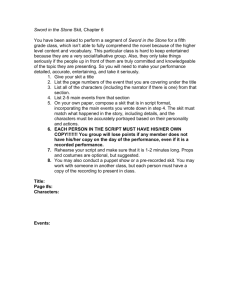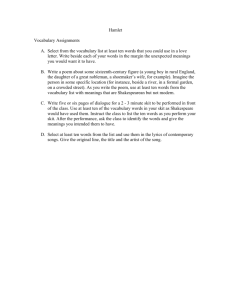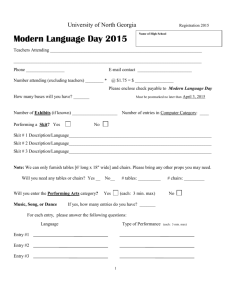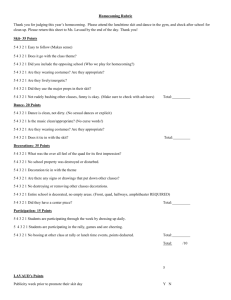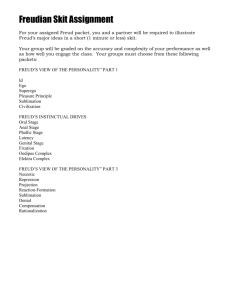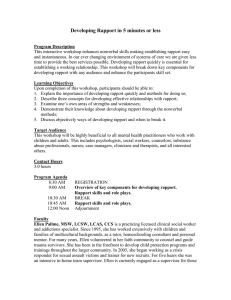Genderlect Styles & Standpoint Theory
advertisement
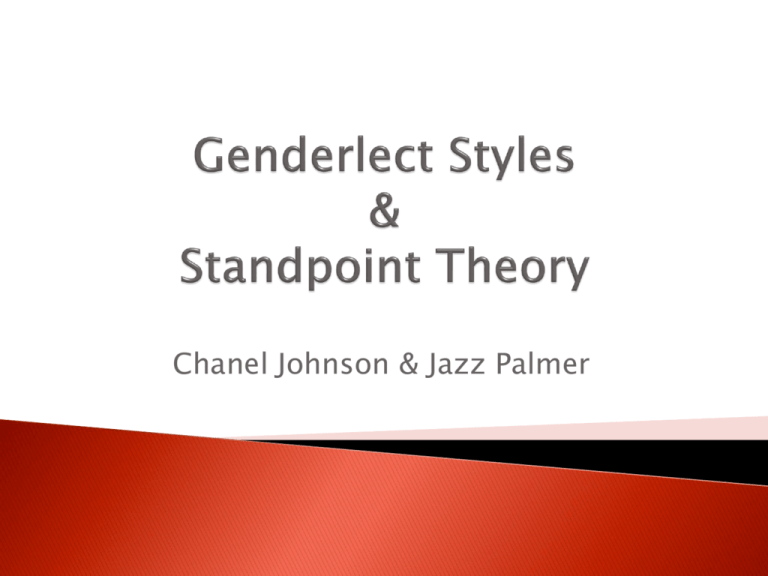
Chanel Johnson & Jazz Palmer “A term suggesting that masculine and feminine styles of disclosure are best viewed as two distinct cultural dialects” Connection vs. status Rapport vs. Report ◦ Rapport: “The typical conversation style of women which seeks to establish connection with others.” ◦ Report: “The typical monlogic style of men which seeks to command attention, convey information, and win arguments.” Rapport-talk (Women) Relationship oriented More expressive (verbally) and responsive with obvious visual/vocal Women give more backchannel cues to encourage turntaking More detailed terms (eg. Colors; use of stories) Disclose more and receive more disclosures Ask more questions Use more evaluative adjectives (cute, fabulous, adorable) Report-talk (Men) Information-oriented Less expressive (verbally) and w/attentiveness respond to women using delayed minimal responses (discourage turntaking) Vocabulary: Objective, less detailed Less disclosing more declarative statements Use stronger expletives Boys learn to… Communicate to assert your ideas, opinions an identity Girls learn to… Use talk to solve problems or develop strategy Speak in a way that attracts attention Use communication to create and maintain relationships Involve others in conversations and respond to their ideas Show sensitivity to others and to relationships 1. 2. Did you notice examples of rapport/report talk in the clips? What did you notice? Did you see the three rules of communication for boys and girls in the clips? A. B. C. D. E. Public speaking vs. Private Speaking Telling a story Listening Asking Questions Conflict Women talk more than men in private conversations. In the public arena, men vie for ascendancy and speak much more than women. Men assume a lecture style to establish a “one-up” position, command attention, convey information, and insist on agreement. Men’s monologue style is appropriate for report, but not for rapport. Men tell more stories and jokes than do women. Telling jokes is a masculine way to negotiate status. Men are the heroes in their own stories. When women tell stories, they downplay themselves. Women show attentiveness through verbal and nonverbal cues. Men may avoid these cues to keep from appearing “one-down.” A woman interrupts to show agreement, to give support, or to supply what she thinks the speaker will say (a cooperative overlap). Men regard any interruption as a power move. Men don’t ask for help because it exposes their ignorance. Women ask questions to establish a connection with others. When women state their opinions, they often use tag questions to soften the sting of potential disagreement and to invite participation in open, friendly dialogue. Men usually initiate and are more comfortable with conflict. To women, conflict is a threat to connection to be avoided at all costs. Men are extremely wary about being told what to do. Directions 1. Pick a partner, pick a card. Each card has “type of talk”. This will be the theme for your skit. 2. Take 5 minutes with your partner to craft a skit based on the guidelines for your “type of talk.” 3. Present your skit to the class. 4. Class will identify report-talk and rapporttalk. 1. 2. Identify male and female role Identify specific examples of rapport-talk and report-talk from skit. “A place of which to critically view the world around us.“ Different elements craft standpoint ◦ ◦ ◦ ◦ Social status Race Religion Gender Consider the person presented on the picture on each slide. Write a name or something you can identify that person as. Write two or three of your initial perceptions of that person. Which picture did you find to be the most likeable? Which picture did you find to be least likable? Are there any personal elements in your life that may have contributed to how you perceived each person? Examples? Consider the following: What standpoints are taken by the characters in the clip? Do you see how each characters different background affected their standpoint? Men and women communicate differently It is important to recognize and understand the differences in how men and women communicate. We should be able to recognize the ways in which a person’s standpoint may vary depending on multiple different elements
